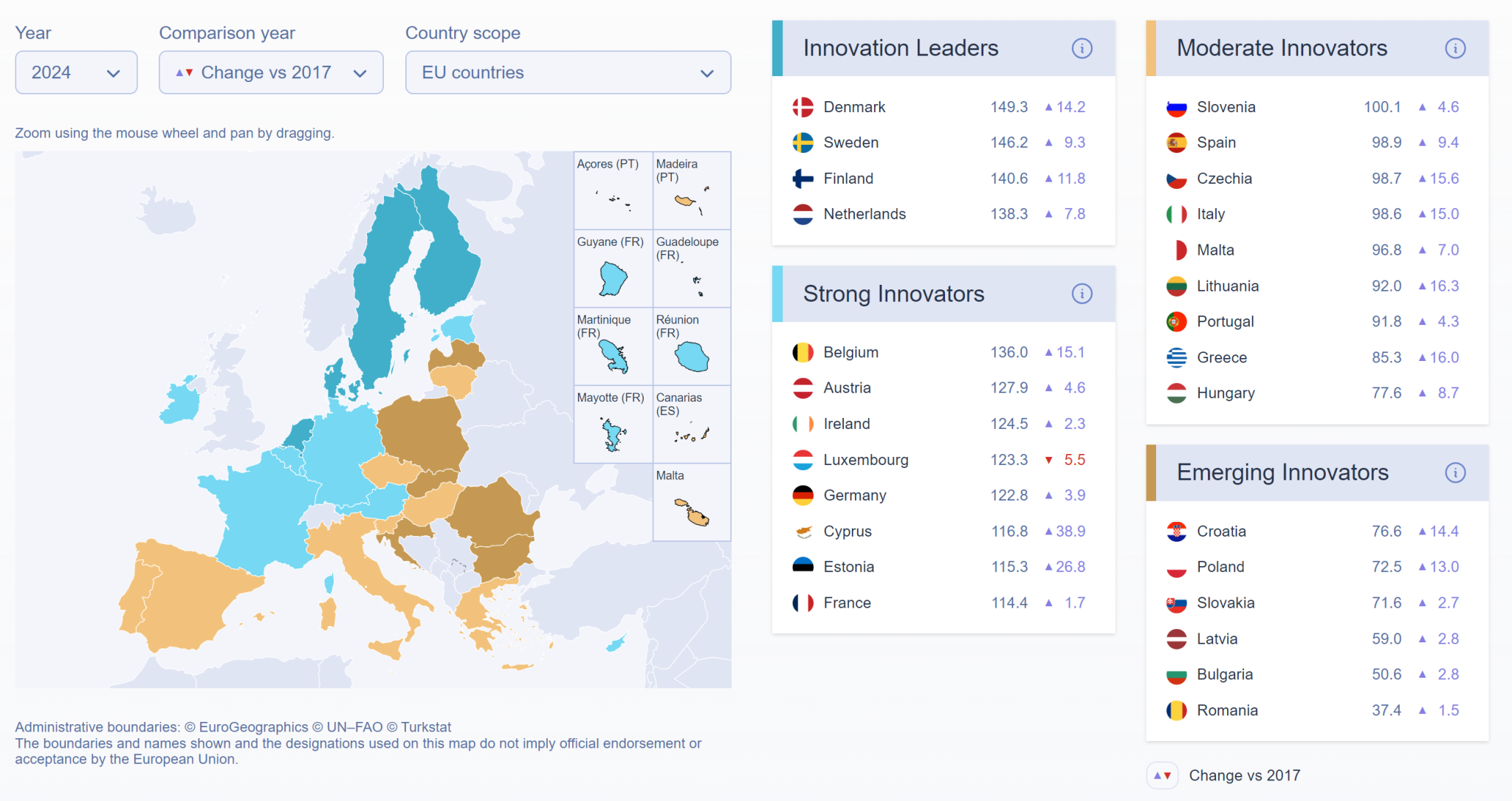
More Financing for Startups and Scaleups in Europe
More Financing for Startups and Scaleups in Europe Óscar SalazarSettings The European Commission has presented the EU Startup and Scaleup Strategy, aimed at positioning Europe
The European Commission released the Innovation Scoreboard 2024 on July 8, offering an in-depth comparative analysis of innovation performance among EU Member States, other European countries, and selected global competitors. The scoreboard reveals a notable 10% increase in the EU’s innovation performance since 2017, with a modest 0.5% improvement observed between 2023 and 2024. This upward trend underscores the region’s ongoing commitment to fostering innovation across various sectors.
The scoreboard is constructed using a comprehensive set of indicators that assess various dimensions of innovation. Data is collected from multiple sources, including Eurostat, national statistical offices, and international organizations. The indicators are grouped into four main categories: Framework conditions, Investments, Innovation activities, and Impacts. These categories encompass metrics such as R&D expenditures, human resources in science and technology, public-private co-publications, patent applications, and high-tech employment. By analysing these data points, the EIS provides a detailed evaluation of each country’s innovation performance and potential for growth.
The scoreboard categorizes Member States into four groups: Innovation Leaders, Strong Innovators, Moderate Innovators, and Emerging Innovators. This classification helps countries identify their strengths and areas needing improvement.
The interactive tool accompanying the report allows for customized comparisons, enabling stakeholders to visualize country profiles, compare strengths and weaknesses, and explore trends. Overall, the EIS serves as a crucial instrument for policymakers, researchers, and businesses to understand and enhance their innovation ecosystems.

Denmark emerged as the most innovative Member State, surpassing Sweden, which had maintained the leading position from 2017 to 2022. This shift highlights Denmark’s robust innovation ecosystem, marked by strong performance in key indicators such as research and development (R&D) expenditure, high-tech employment, and digital infrastructure. Meanwhile, Estonia’s steady progress since 2017 has propelled it into the “Strong Innovators” category, reflecting its strategic investments in technology and innovation. Conversely, Belgium experienced a slight decline, moving from “Innovation Leader” to “Strong Innovator,” largely due to its proximity to the cut-off values defining these categories.
The full report can be accessed here:

More Financing for Startups and Scaleups in Europe Óscar SalazarSettings The European Commission has presented the EU Startup and Scaleup Strategy, aimed at positioning Europe

Do data centres truly improve sustainability? Fernando GómezSettings The rise of Industry 4.0 and the increasing use of new technologies have created a significant dependence

Tracking Europe’s Green Transition: Insights from LIFE programme trends (2021–2024) Marie LatourSettings Since the start of the 2021-2027 programming period, the LIFE Programme has financed
